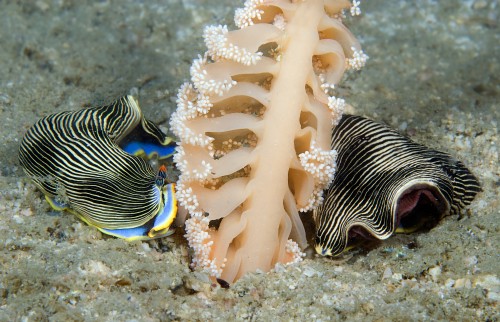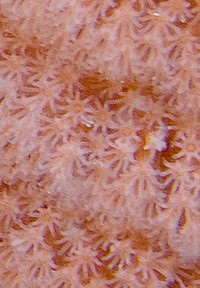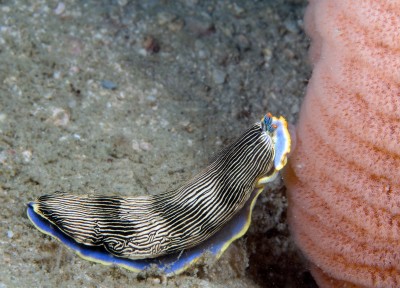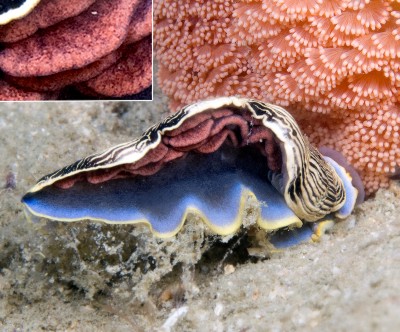Re: Armstrong Beach, Queensland. What is it?
March 9, 2010
From: Lawrence Neal

Concerning message #23252:
Dear Sharyn and Bill,
Here are some pictures of sea pens being attacked by Armina semperi in Thailand, which you may find interesting. However, this sea pen is a different species from Sharyn's washed-up individual from Australia - I believe this one is Virgularia sp.
When the Armina nudibranchs approach a sea pen, they raise up off the substrate and stretch up to take a bite quite high up on the Virgularia. As soon as the sea pen senses the attack (after about 1 second) it retracts down into the sand, pulling the nudibranch with it. This can be seen in the photos. In the picture with two individuals, one has already taken a bite and has been dragged down head first into the sediment, while the other one is about to attack the partially retracted sea pen.
This variety of sea pen grows in sandy or silty environments and large specimens get up to about 20 cm tall (above the sand). The Armina semperi can number in the hundreds at certain times and places, perhaps emerging from the sand at times of low current. These pictures were taken in the middle of the day so this species doesn't seem to be nocturnal.
Locality: Koh Phai, Pattaya, 6 metres, Chonburi Province, Thailand, Gulf of Thailand, 14 June 2009, Sandy bay. Length: 50 mm. Photographer: Lawrence Neal.
All the best,
Lawrence
lorenzo_n@yahoo.com



Dear Lawrence,
Thanks for these wonderful photos. This has so much information on Armina semperi that I have linked it with that species Fact Sheet rather than with the Sea Pens. Because of the detailed view of the polyps in your photos, I have added a reference on that page however.
Of particular interest are the pink flaps we can see in your lower photo hidden beneath the mantle skirt. These are often mistakenly considered to be gills, but although gas exchange may be a secondary function, they are like the cerata of aeolids, a place where the digestive gland can expand. They are pink in this animal because that is the colour of their sea pen food.
Best wishes,
Bill Rudman
Related messages
-
Armina semperi from Thailand
From: Lawrence Neal, September 4, 2008 -
Armina semperi from Changi, Singapore.
From: Ria Tan, February 6, 2003 -
Armina sp. 2. from Philippines
From: Erwin Koehler, April 3, 1999
